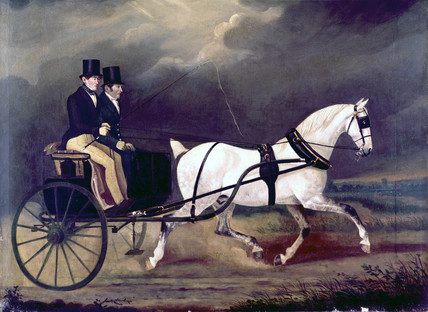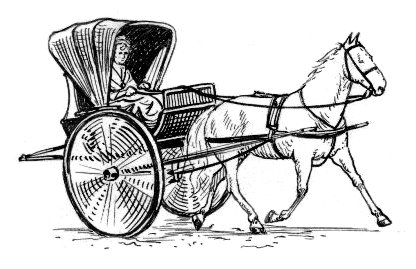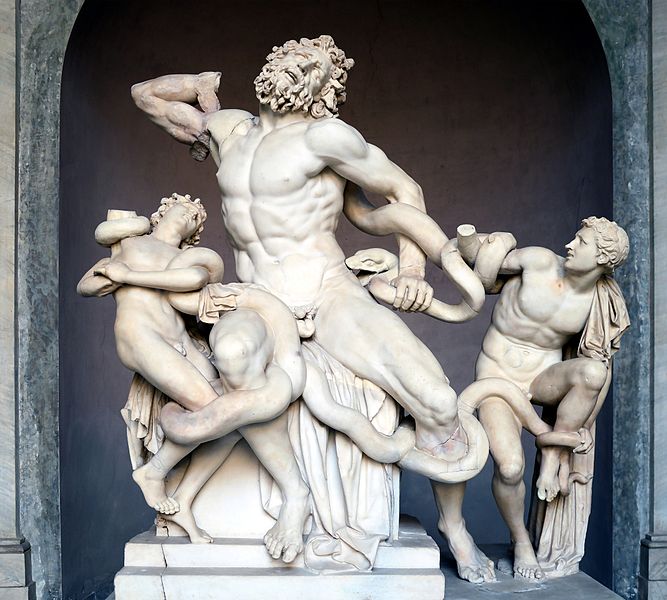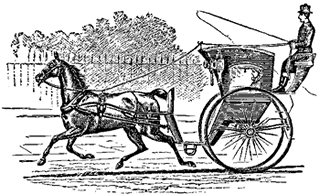Stave One: Marley’s Ghost
- stave
-
“Stave” is an archaic form of the word “staff,” which is a stanza of a song or poem. The title of the work refers to itself as being a Christmas carol (song) in prose form, so the labeling of the acts is appropriately musical.
- Jacob Marley
-
Several of the names used in A Christmas Carol are meaningful. A Jacobus was an English gold coin from the reign of James I (1567-1625). “Marley” comes from a word meaning “soil” or “sleet.”
- Ebenezer Scrooge
-
“Ebenezer” is a Biblical name which means “stone of help.” Scrooge is noted as a being “hard and sharp as steel,” but by the end of the story he does indeed help the Cratchit family.
The term “Ebenezer” was also used to mean “dissenter.” It was used to refer to churches (mostly Methodist or Baptist) which were not part of the Church of England, originally from the name of one such church.
A “scrooge” was a tight, squeezing crowd. Scrooge is mentioned in the text as a “squeezing, wrenching, grasping, scraping, clutching, covetous old sinner.” Today, of course, thanks to this story, a miser is referred to as a “scrooge.” It is unfortunate that his name is now irrevocably associated with cold-heartedness and avarice, as the beauty of the story is in his redemption.
- …Scrooge’s name was good upon ’Change…
-
“’Change” refers to the Royal Exchange, where Scrooge is shown to have business. At the time that A Christmas Carol was published, the Exchange had burned down almost six years previously. Queen Victoria opened the new Exchange the following year.
It is interesting to observe that, whatever his other faults, Scrooge is noted here for his trustworthiness. If Scrooge gives his word, one can rely on it. This makes his later commitment to change his ways more meaningful; otherwise, it could be seen as an empty promise, made in a moment of desperation.
- as dead as a door-nail
-
Dickens didn’t invent this phrase; it originates from at least the thirteenth century, and Shakespeare popularized it in Henry IV and Henry VI. Its usage here was inspired by a dream Dickens had, in which one of his good friends had died, and someone in the dream referred to them as being dead “as a door-nail.”
- residuary legatee
-
A person who receives all of a person’s estate which is not otherwise assigned in their will.
- …and solemnised it with an undoubted bargain.
-
Marley had no family, and no friends other than Scrooge, so Scrooge was the executor of Marley’s estate. Scrooge is such a miser that the comfort he receives from Marley’s funeral is principally from how inexpensive it was.
- Saint Paul’s Churchyard
-

Saint Paul’s is an Anglican cathedral in London, not far from Cornhill. It was destroyed in the Great Fire of London in 1666, and completely rebuilt by 1697.
- Hamlet
-
In Hamlet, act I, scene 4, Hamlet meets the ghost of his late father on the ramparts of the castle Elsinore. Dickens compares Marley’s visit to Scrooge with the visit Hamlet receives from his father, saying that neither encounter would have been remarkable had Marley and King Hamlet still been alive.
- Scrooge and Marley
-
In his youth, Dickens lived near a tradesman’s business with a sign that read “Goodge and Marney,” which may have influenced the names of Scrooge and Marley.
We aren’t told exactly where Scrooge’s place of business is located. It is almost certainly in Cornhill, as it was considered the center of finance in London and is where the Royal Exchange is found, which Scrooge is noted to have visited regularly for business. Cratchit is also mentioned to have gone to slide down its namesake hill after work on Christmas Eve. Another clue is the mention of a church belltower with gothic windows, which is visible from the office. Finally, the court where his business was found was noted to be extremely narrow. These clues have lead some to suggest Newman’s Court as a likely candidate, as it is very narrow and is directly across from St. Michael’s Church in Cornhill, which has a belltower with gothic windows. Today, just a few steps down the street is a hotel and pub called, appropriately enough, The Counting House.
- rime
-
Ice crystals formed from water vapor that has frozen onto cold surfaces. Here, it refers to Scrooge’s white hair, eyebrows, and beard.
- dog-days
-
The hottest part of the summer. Sirius, also known as the “dog star,” appears in the night sky during this period and is the source of the name.
- came down
-
Dickens indulges in a pun here: to “come down” means to give money. One of Scrooge’s most notable characteristics is his miserliness. Scrooge may have been partially inspired by John Elwes, a member of parliament who was so notorious for being a skinflint that he was commonly known as “John the Miser”.
- nuts
-
Pleasant or delightful.
- the weather
-
The descriptions that Dickens provides of the weather throughout the book reflects the mood in that particular section of the work. Through most of the book, the weather is repeatedly described as oppressively cold and foggy. This type of weather emphasizes dreariness and isolation: people avoid going out in such weather, and when they do, the fog obscures vision and isolates the traveler. This reflects Scrooge’s own disposition: hard, lonely, and bitter. In the happier parts, the fog clears and the cold is described as invigorating rather than oppressive.
- withal
-
As well
- palpable brown air
-
“Palpable” means “touchable;” the smog was so thick that you could almost feel it. Today we might say that “you could cut it with a knife.” Back then, people burned coal in their homes to heat them and cook food, and the emissions from the dense population made the air visibly brown from the coal smoke.
- …lived hard by, and was brewing on a large scale.
-
“Hard by” means “nearby.” The process of brewing involves very hot liquids, producing much steam. Dickens says here that the fog was so thick that you might think that large-scale brewing activity was happening nearby.
- heat and cold
-
The office is barely warmed at all due to the pitiful fire, which Scrooge’s miserliness ensures will remain tiny. The fire in Scrooge’s own home is later described as being equally tiny, so much so that “He was obliged to sit close to it, and brood over it.” In contrast, Scrooge’s nephew and even the struggling Cratchits are shown to have welcoming fires. This is a reflection of their own hearts: cold and solitary versus warm and open. Imagery of heat and cold are repeatedly used in this way throughout the story.
- Scrooge kept the coal-box in his own room
-
The fact that Scrooge prevents Cratchit from getting more coal is often looked at as an indication of his greediness. However, it is later noted that Scrooge spends little money on his own comfort, so it seems inconsistent that Scrooge is hoarding the coal to keep it for himself. What this may indicate is that Scrooge thinks Cratchit to be irresponsible with his resources, as Scrooge considers comfort to be of little value. This may be how Scrooge justifies to himself his clerk’s low salary: why increase his pay if he would only waste it?
Why is Scrooge’s fire larger than Cratchit’s, then? Cratchit works in a “tank,” indicating that the area in which he works is smaller than Scrooge’s, and therefore logically should not require as large a fire to heat. Scrooge doesn’t care about Cratchit’s comfort nor his own; the office is heated at all only because frozen fingers cannot write.
- comforter
-
A long, wide scarf, wrapped around the body to help keep warm.
- Humbug!
-
A “humbug” is a hoax or fraud. Here, as an exclamation, it is used in a roughly equivalent manner to “Nonsense!” Scrooge utters the word six times in the text (not counting one instance where he stops after the first syllable), all of them before or during Marley’s visitation. Given what we learn about Scrooge from his time with the Ghost of Christmas Past, it is perhaps understandable that he would feel that Christmas is a sham. To the modern ear, “humbug” seems to have lost its original meaning entirely; it is now forever known as Scrooge’s catchphrase and carries a connotation of grumpiness.
- What right [or]… reason have you to be merry? You’re poor enough.
-
Scrooge equates wealth with happiness, and therefore finds no reason why Fred should be happy because he is not wealthy. Fred immediately points out that Scrooge is wealthy yet not happy. Clearly this inconsistency had not occurred to Scrooge, as he is unable to rebut his nephew’s argument.
- Out upon…
-
“Shame on” or “curses upon.”
- …buried with a stake of holly through his heart.
-
Historically, murderers or suicides were deemed unworthy of a regular Christian burial. Instead, they were buried at a crossroads with no religious ceremony and with a stake through the heart to prevent their tortured souls from troubling the living. In the ancient Celtic religion from which many Christmas traditions sprang, holly offered protection from evil spirits. Ironically in this case, it was also a symbol of eternal life and fertility.
- …losing your situation.
-
One’s situation is their employment. Scrooge is threatening to fire his clerk.
- Scrooge said that he would see him—yes, indeed he did. He went the whole length of the expression, and said that he would see him in that extremity first.
-
Dickens euphemistically states that Scrooge said to his nephew that he’d see him in Hell before he’d come to dinner.
- Nay, uncle, but you never came to see me before that happened. Why give it as a reason for not coming now?
-
When Scrooge’s nephew asks him why he won’t come to dinner, Scrooge responds that it is because he got married. Fred points out that he never came even before he was married, so there must be some other reason. Scrooge chooses not to respond to this argument. Later, we learn that Fred is a painful reminder to Scrooge of his sister, Fan. He refuses the invitation because he prefers to leave that memory buried, but he won’t admit this to Fred.
- fifteen shillings a-week
-
Below is a description of the denominations of money used in A Christmas Carol, from smallest to largest:
- 4 farthings = 1 penny
- 12 pence (pennies) = 1 shilling
- 5 shillings = 1 crown
- 4 crowns = 1 pound
Bob Cratchit has come to be representative of the poor and destitute worker abused by a cruel employer. But how accurate is that, really?
On the one hand, as an educated, skilled worker, Cratchit was definitely paid better than London’s typical laborers, who would have received around half of what he made. Fifteen shillings per week would easily have been a livable wage for him had he been a bachelor.
On the other hand, he would certainly find it difficult to provide for a wife and six children, never mind obtain proper care for the seriously ill Tiny Tim. Indeed, the vision of the Ghost of Christmas Present shows us that Martha also works to bring income for the family, and that Peter would shortly begin working, as well. Additionally, Cratchit likely worked ten hours a day, six days a week, and did not receive benefits, paid sick leave, etc. Dickens makes sure to mention that Cratchit walks to and from work. If we presume that Scrooge’s office was near the Royal Exchange (as he had business there), it was around an hour each way from Camden Town. We know from the last stave that Cratchit was expected to be at work by 9:00 a.m., therefore he had to leave home by 8:00 a.m. and wouldn’t get home before 8:00 p.m.
Some have attempted to translate Cratchit’s salary into modern terms, but there are a variety of ways to attempt this that result in wildly different answers. It’s also hard to say just how unfair Cratchit’s salary was, due to the uncertainty about his exact duties as Scrooge’s clerk. Some have pointed out that Cratchit was most likely acting as a mere bookkeeper rather than a full-fledged accountant, since otherwise he would be so underpaid that it would seem unreasonable for him to be grateful to Scrooge, or to not seek another employer.
Ultimately, it may be best to set aside these questions, as focusing on how unfair Cratchit’s salary might have been or how it might compare to a modern minimum wage is missing the point of the story. Remember that Scrooge was noted for his honesty; while he was not generous, he paid what he committed to pay and did not cheat his employee. But honesty without charity wasn’t enough to spare him from Marley’s fate. Dickens suggests that as his employer, Scrooge bears some responsibility for Cratchit’s family’s welfare. By shutting everyone out of his life, he not only neglects that responsibility, but his own soul as well.
- …and a wife and family,…
-
The clerk’s circumstances reflect Dickens’s own at the time this was written. As previously mentioned, Dickens was in the midst of a personal financial downturn, and his wife was pregnant with their fifth child.
- I’ll retire to Bedlam.
-
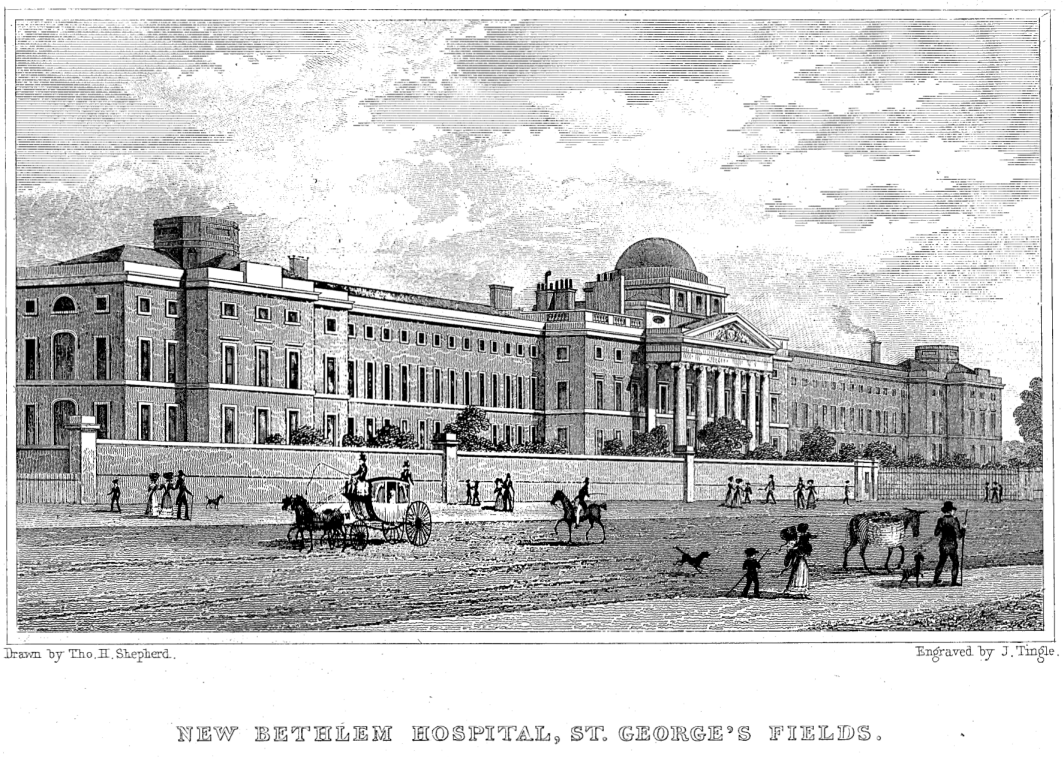
Bethlem Royal Hospital, colloquially called Bedlam, was a lunatic asylum in London. Scrooge is saying that he feels that he is surrounded by crazy people. This reference is why Dickens refers to Cratchit as a lunatic in the next sentence. The term “bedlam” has come to mean “chaotic uproar.” Today Bethlem Royal Hospital is a modern psychiatric facility.
- He died seven years ago, this very night.
-
His business partner and friend dying on Christmas Eve is one of several events we learn about in Scrooge’s past that sour him on the holiday.
- Are there no prisons?
-
Scrooge’s response to the gentleman is a reflection of a sarcastic question posed by Scottish philosopher Thomas Carlyle in his pamphlet Chartism: “Are there not treadmills, gibbets; even hospitals, poor-rates, New Poor-Law?” The Ghost of Christmas Present later reminds Scrooge of these words when he is confronted with the embodiments of Ignorance and Want.
- Union workhouses
-
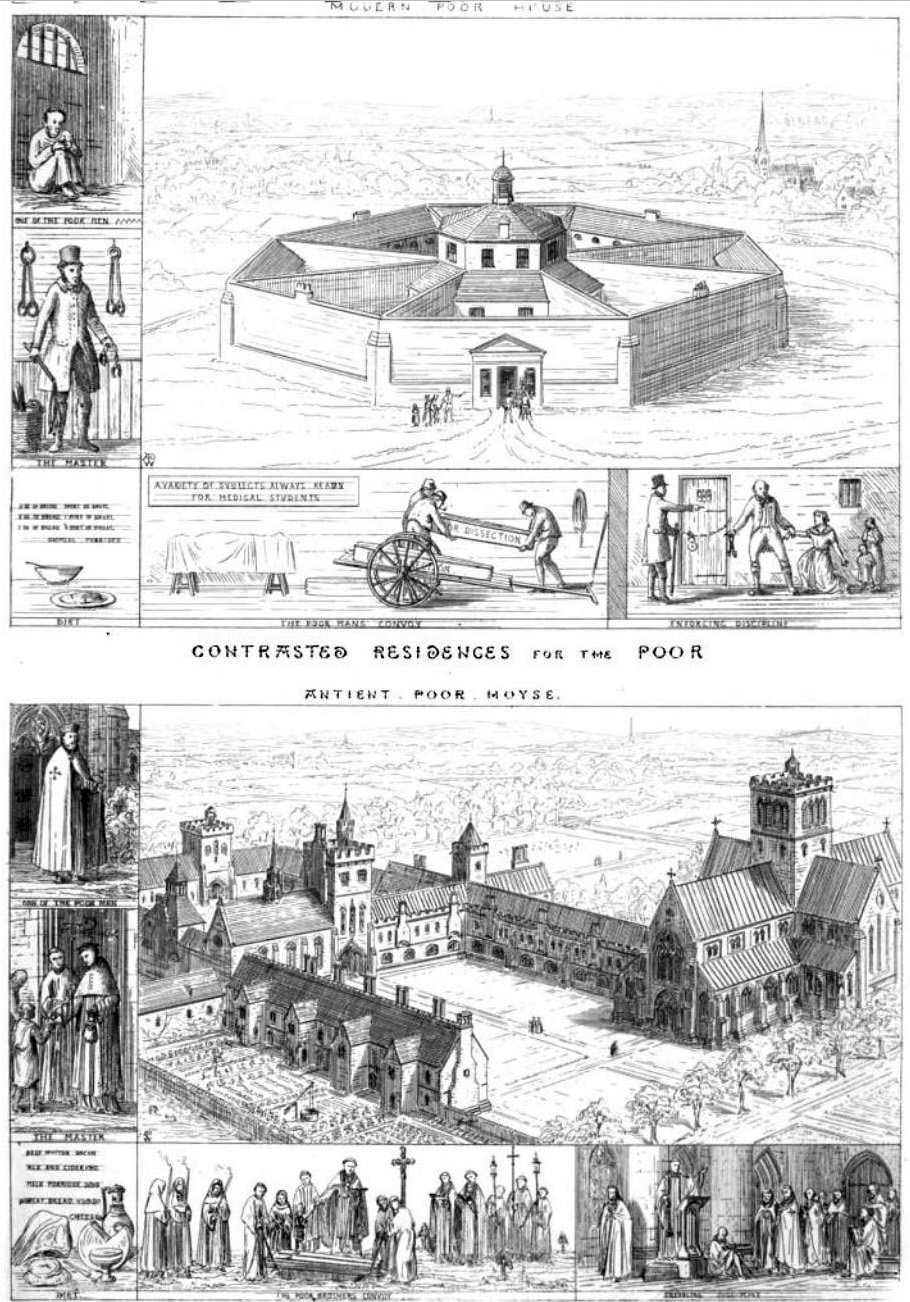
Union workhouses were places where those who were in debt or convicted of minor offenses were sent, where they would engage in hard menial labor for their room and board. Being sent there was pretty much the lowest you could go in the societal ladder outside of prison, and the living conditions were abysmal.
- the Treadmill
-

The treadmill was invented for the purpose of harnessing human walking power to perform useful work. (Thus the name: “tread” meaning “to step” and “mill” meaning “to grind grain into flour.”) English civil engineer Sir William Cubitt had treadmills installed in prisons to extract labor from prisoners. The prisoners would climb steps mounted on a large wheel while holding a handrail for stability. The long, eight-hour shifts on the treadmill also kept them occupied and tired, and thus less likely to cause trouble. As you can see from the illustration, catastrophe awaited the unfortunate soul who was unable to keep up.
- the Poor Law
-
The Poor Law was the government framework ostensibly for helping the poor and needy, though in practice, it tended to keep them poor instead. In that respect, it was not unlike modern government welfare. A Christmas Carol and Oliver Twist both portray the Poor Law negatively, and both were a source of embarrassment to those in government responsible for it.
- If they would rather die,… they had better do it, and decrease the surplus population.
-
Scrooge’s views here may have been influenced by English economist Thomas Malthus, who held that population growth was the cause of a variety of social ills. Interestingly, both Dickens and Malthus were opposed to the Poor Law, though the latter’s opposition was due to its effect on inflation rather than on people.
During Scrooge’s encounter with the Ghost of Christmas Present, as he is confronted with the future death of Tiny Tim, the spirit reminds him of these words.
- It’s enough for a man to understand his own business, and not to interfere with other people’s.
-
Scrooge here plainly admits that he is willfully ignorant of the plight of the poor. Later, Jacob Marley explains that he also had this character flaw, and it is that which has doomed him to his fate, and threatens to doom Scrooge as well.
- flaring links
-
A link is a torch. The fog was so thick that horses had difficulty seeing through the haze, requiring someone to go before them with a light.
- water-plug
-
A fire hydrant.
- holly
-
Holly was part of Celtic tradition before Christianity; the druids wore holly in their hair, believing that holly leaves protected against evil spirits, and were a symbol of eternal life and fertility. Holly was used in European heraldry as a symbol of truth.
Holly became part of Christian tradition in part due to its symbolism: The leaves come to sharp points, reminding one of the crown of thorns worn by Christ during his crucifixion. The red berries were symbolic of drops of Christ’s blood. The bark of the holly plant is bitter, like the gall offered to Christ on the cross. The fact that the plant is evergreen is representative of life after death. The lyrics of the Christmas carol “The Holly and the Ivy” discuss the Christian symbolism of the holly, and also mention ivy as being representative of the Virgin Mary.
- garret
-
An attic room, usually a small, uncomfortable one
- Saint Dunstan
-
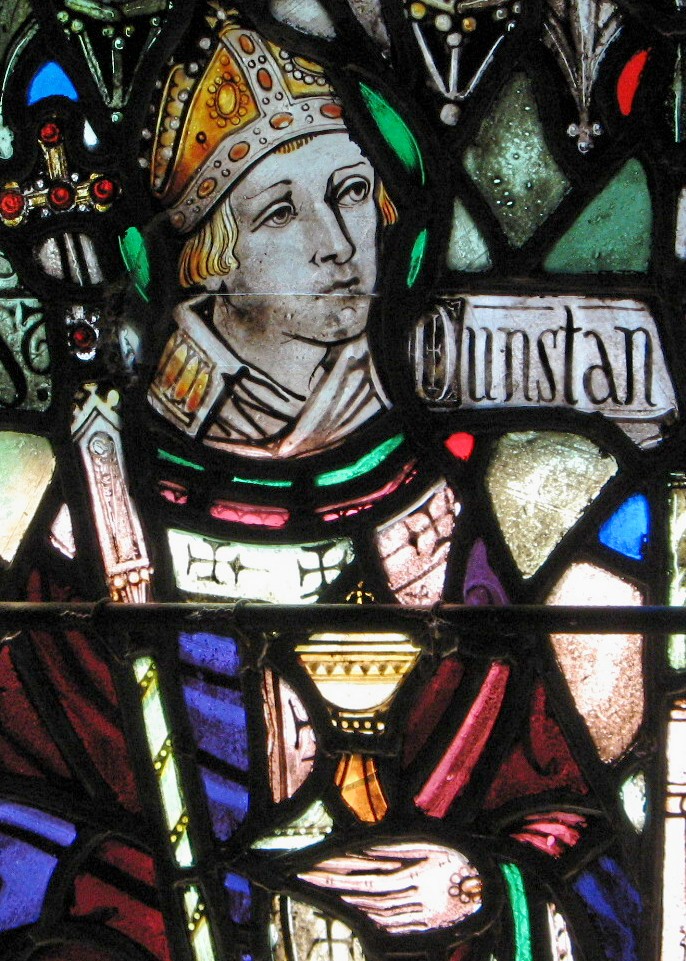
This is in reference to a story in which Saint Dunstan, the archbishop of Canterbury, attacked the devil, who was disguised as a woman:
St Dunstan, as the story goes,
Once pull’d the devil by the nose
With red-hot tongs, which made him roar,
That he was heard three miles or more. - stop half-a-crown
-
A crown was equal to five shillings. As Cratchit was paid 15 shillings (or three crowns) a week and worked six days a week, half a crown (or two shillings and sixpence) would constitute one day’s pay. Withholding that half-crown, then, would be to refuse to pay Cratchit for that day in which he did not work.
Note that Cratchit having Sundays off was a practical consideration for Scrooge: other businesses would be closed, and it would be unprofitable for Scrooge to keep his open when no business could be conducted.
- I’ll be bound
-
An old-fashioned way of saying “I’m certain.” A person who says they’ll be bound means that they are so sure of it that they will stick with those words as if they were bound to them with ropes, and not take them back. Today we express the same sentiment by saying, “You can hold me to that.”
- for he boasted no great-coat
-
Cratchit’s comforter is inadequate for true protection from the winter cold, but he was too poor to afford a winter coat.
- Cornhill
-
Cornhill is a hill located in the London’s financial district. (The Royal Exchange, also mentioned in the story, is located nearby.)
- Camden Town
-
As previously mentioned, Camden Town is about an hour’s walk from Cornhill. At the time, it was considered a rather unfashionable part of London. Some adaptions show Tiny Tim waiting to meet his father when he gets out of work, since they are later shown to return home together.
- blindman’s-buff
-
A parlour game in which a blindfolded player attempts to catch another player and identify them. The game is featured more prominently in the story at Fred’s Christmas party witnessed by Scrooge and the Ghost of Christmas Present.
- fancying
-
Imagining. The next paragraph talks about Scrooge having “little of what is called fancy about him,” meaning he is not very imaginative.
- let
-
Rented.
- Scrooge’s home
-
Scrooge lives in a place that is reflective of his own self: cold, isolated, and dreary. Just as Scrooge permits no one else into his home to keep him company, he lets nobody into his life to cheer him.
- fain
-
Obliged, compelled.
- Genius of the Weather
-
To the ancient Romans, a “genius” was a sprite or spirit.
- …the corporation, aldermen, and livery.
-
The Corporation of London was (and still is, under the name “City of London Corporation”) the governing body of the City of London. (What we call London is actually a larger entity that grew to enclose the original City of London.) The Court of Aldermen is an elected body within that corporation with certain administrative responsibilities. The livery companies are trade associations and guilds, which heavily influence the government of the City of London. They evolved from medieval guilds and were made corporations under royal charter. In describing Scrooge’s lack of fancy, Dickens is also taking a jab at the dull and unimaginative politicians of his day.
- …like a bad lobster in a dark cellar.
-
Lobsters contain bacteria that, if not destroyed by cooking, will glow faintly as they decompose it.
- coach-and-six
-
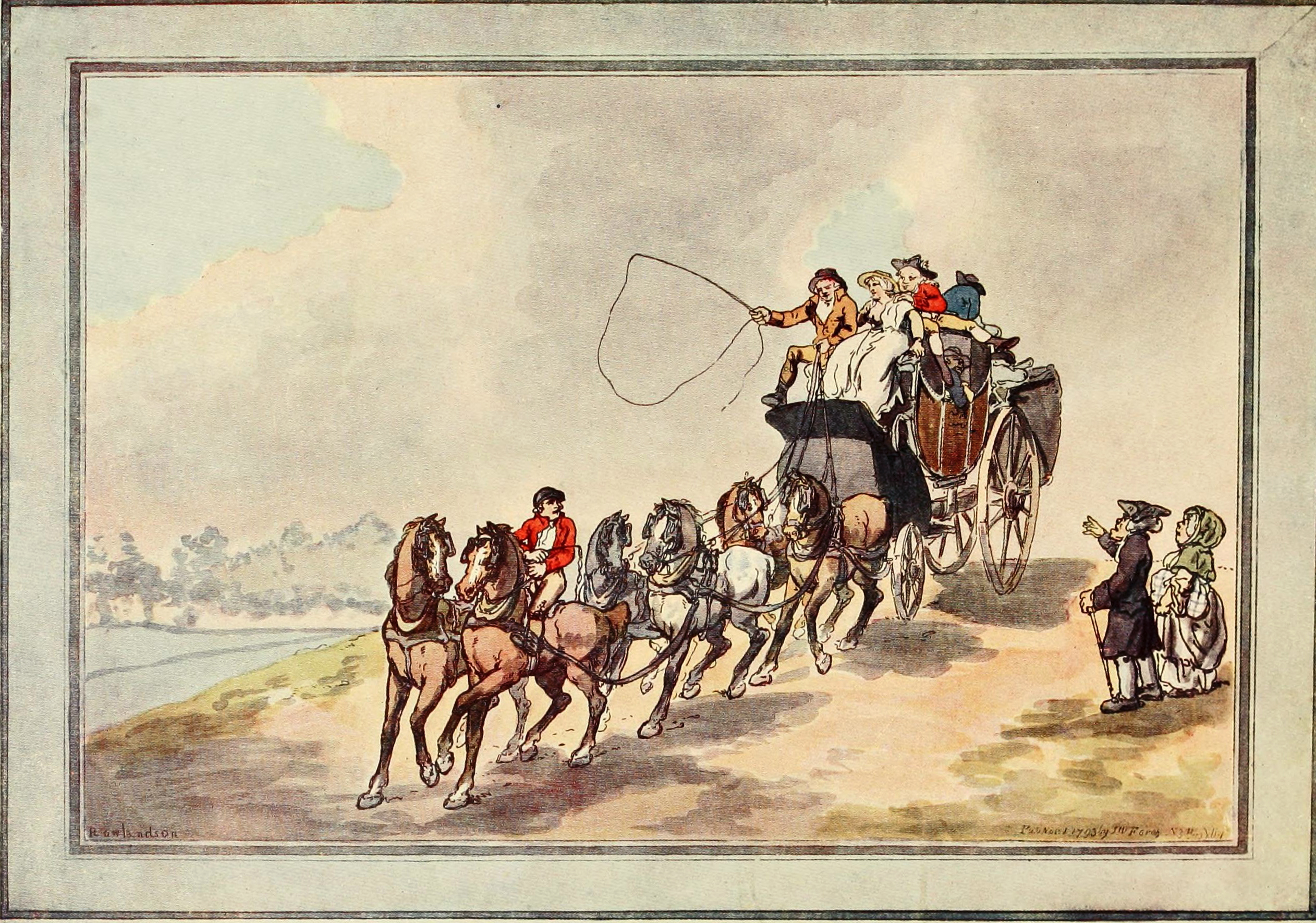
A coach drawn by six horses.
- …through a bad young Act of Parliament…
-
Acts of Parliament were notorious for having gaping loopholes, such that you could figuratively drive the aforementioned coach-and-six through one.
- splinter-bar
-
A bar at the front of a carriage that connects it to the springs.
- balustrades
-
A railing held up by a series of short pillars; in this case, as a support for climbing the stairs and a barrier to prevent falling off of them.
- locomotive hearse
-
The term “locomotive” is modernly associated with trains, but in fact just means that it moves under its own power; i.e., not drawn by horses. So what Scrooge believed he saw was a hearse moving up the stairs by supernatural means.
- dip
-
A dip was a type of inexpensive candle. It was made by melting tallow, then dipping the wick into it.
- lumber-room
-
A room for storing furniture not used in other parts of the house.
- gruel
-
An inexpensive, thin oatmeal. It is interesting to note that despite being wealthy, he does not enjoy the comforts that his wealth can bring him, as Fred later notes during Scrooge’s encounter with the Ghost of Christmas Present. He has become so focused on the accumulation of wealth that it has become an end unto itself: he makes money just to make money, not to actually benefit anyone with it, even himself.
- hob
-
A shelf at the back of the hearth, used to keep food warm.
- fish-basket
-
A large, typically shallow basket, usually made of wicker. They were so called because they were often used for carrying fish, but in homes might hold other things such as linens.
- washing-stand
-
A small table which holds a basin of water, used for washing one’s hands and face.
- cravat
-
A band or scarf worn around the neck.
- butter-boat
-
A dish used for holding butter, so named because its shape resembles a boat. Here, the comparison is reversed: the images on the tiles are said to show the apostles in boats that resemble the dish.
- …came like the ancient Prophet’s rod, and swallowed up the whole.
-
In chapter 7 of Exodus, the Lord through Moses turned Aaron’s rod into a serpent as a sign to Pharaoh. Pharaoh’s sorcerers did the same, but Aaron’s rod swallowed theirs.
- servant bells
-
In larger Victorian homes, in order to call someone from another part of the house, a room would be fitted with a bell pull that connected to a bell located elsewhere. Usually, multiple rooms in a house would have bell pulls which connected to bells mounted on a board in the servant wing, so that the residents of the home could easily summon a servant to wherever they happened to be in the house. However, this bell is located in Scrooge’s room. It’s possible that it used to be a servant’s room, as much of the house is used as offices.
- chained ghosts
-
Ghosts were thought to be clothed in whatever they were wearing when they died. Therefore, it stood to reason that the spirit of someone who died in prison would wear the chains they were shackled with in life, and thus continue their penance in the afterlife. We soon learn that Marley’s chains come not from what he was physically wearing at his death, but from the desires of his heart in life.
Pliny the Younger relates a ghost story in one of his letters. In the story, Athenodorus the philosopher stays in a home said to be haunted, and is visited by a ghost. It leads him to a spot where its corpse is found, still wearing its chains. The bones were collected and given a proper burial, and the haunting of the house ceased. In the story, the ghost’s chains are mentioned casually, as if it was not a novel idea even then. Thus, in chaining Marley, Dickens is relying on an old trope that was as well-known to his audience then as it is to us today.
- Marley’s chains
-
In March 1842, Dickens visited the Western Penitentiary in Pittsburgh, Pennsylvania. Seeing chained prisoners there affected him deeply, and this experience may have influenced Marley’s appearance.
The chains with which Marley is weighed down reflect the desires of his heart in life, and that our actions (or inactions) have consequences. Marley’s entire life was focused on the goal of profit, and now in the afterlife he is cumbered with the chain he himself created.
In Dante’s Divine Comedy, the fourth circle of Hell is populated by those who committed the sin of Greed. Those who inhabit this circle are compelled to push great weights. Marley takes the role of Virgil to Scrooge’s Dante, but his chains indicate that he is also condemned for his greed. There are multiple parallels between A Christmas Carol and the Divine Comedy, but this is one of the clearest.
- …Marley had no bowels…
-
This is a reference to 1 John 3:17: “But whoso hath this world’s good, and seeth his brother have need, and shutteth up his bowels of compassion from him, how dwelleth the love of God in him?” At the time, the bowels, like the heart, were considered a source of human emotion. Marley having no bowels indicates that he had no compassion for his fellow man in need during his life. However, Dickens’s love of puns compels him to point out that Marley’s transparency allows one to verify that he literally has no intestines.
- …folded kerchief bound about its head and chin…
-
The cloth was tied around the head of the deceased to keep the mouth from gaping. Marley later removes it to allow his jaw to drop, possibly to terrify Scrooge into submission.
- How now!
-
“What is the meaning of this?”
- “You’re particular—for a shade.” He was going to say “to a shade,” but substituted this, as more appropriate.
-
“To a shade” means “somewhat,” but “shade” can also mean “ghost.” Dickens explains later that Scrooge is trying to be clever to distract himself from the terror of his current situation.
- There’s more of gravy than of grave about you, whatever you are!
-
Scrooge continues to attempt to distract himself with smart remarks. He retorts with this play on words that Marley’s appearance is the result of indigestion (“gravy”) rather than the supernatural (“grave”).
- waggish
-
playfully or facetiously humorous
- would play… the very deuce with him.
-
To “play the deuce with” something is to disrupt it. He wants to be distracted from Marley to retain mastery of his emotions.
- …its hair, and skirts, and tassels, were still agitated as by the hot vapour from an oven.
-
This indicates that Marley is visiting Scrooge from Hell.
- fettered
-
Chained.
- Is its pattern strange to you?
-
Marley is about to explain that Scrooge should not be surprised by the chains, as he himself wears even longer ones.
- It comes from other regions… and is conveyed by other ministers, to other kinds of men.
-
In Dante’s Divine Comedy, the damned soul Virgil cannot speak of Christ or Heaven, and so refers to them obliquely, as Marley does here.
- mark me!
-
“Pay attention!”
- You might have got over a great quantity of ground in seven years.
-
Scrooge still does not wish to face the reality of Marley’s visit, so he instead tries to find reasons to reject it by looking for inconsistencies in his story. Marley, who suffers greatly and has gone through some effort to spare Scrooge from his own fate, understandably does not respond well to this.
- Ward
-
One charged with keeping watch; in this case, a police officer.
- Mankind was my business.
-
Marley directly contradicts Scrooge’s earlier statement to the gentlemen that visited his office that the fate of the poor was not his business.
- That blessed Star
-
Marley references the story of the Nativity, in which a star appeared which guided the Wise Men to the Christ child. Had they not seen the star, they would never have been able to visit the child Jesus. Similarly, Marley’s self-absorption prevented him from receiving the blessings of service to others.
- You will be haunted… by Three Spirits.
-
Dickens’s first novel, The Pickwick Papers, featured a story called “The Story of the Goblins Who Stole a Sexton,” in which a character much like Scrooge has a change of heart about Christmas after being shown the past and future by visiting goblins. This was undoubtedly a precursor to A Christmas Carol.
- Scrooge’s countenance fell almost as low as the Ghost’s had done.
-
This refers to when Marley removed the cloth bound around his head.
- “Couldn’t I take ’em all at once, and have it over, Jacob?” hinted Scrooge.
-
Scrooge has not yet understood the importance of the Spirits’ visits, only seeing them as an inconvenience and an interruption to his sleep, so he attempts to negociate with Marley to combine them into one visit.
- …one old ghost, in a white waistcoat…
-
Dickens may have intended this to be the same individual as the gentleman in the white waistcoat in Oliver Twist.
slow
